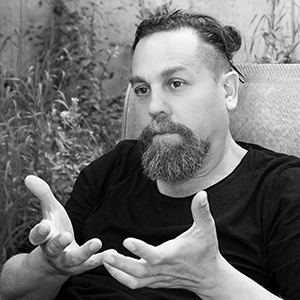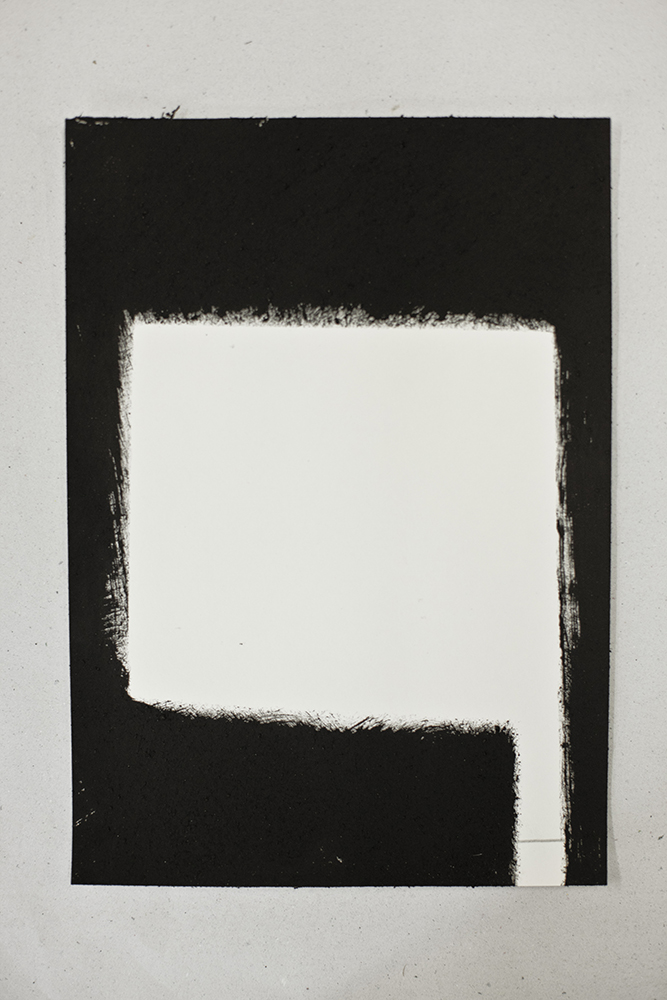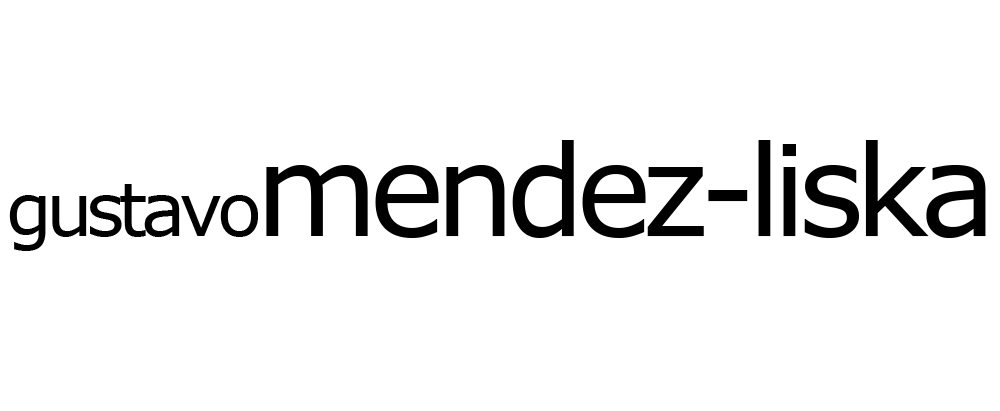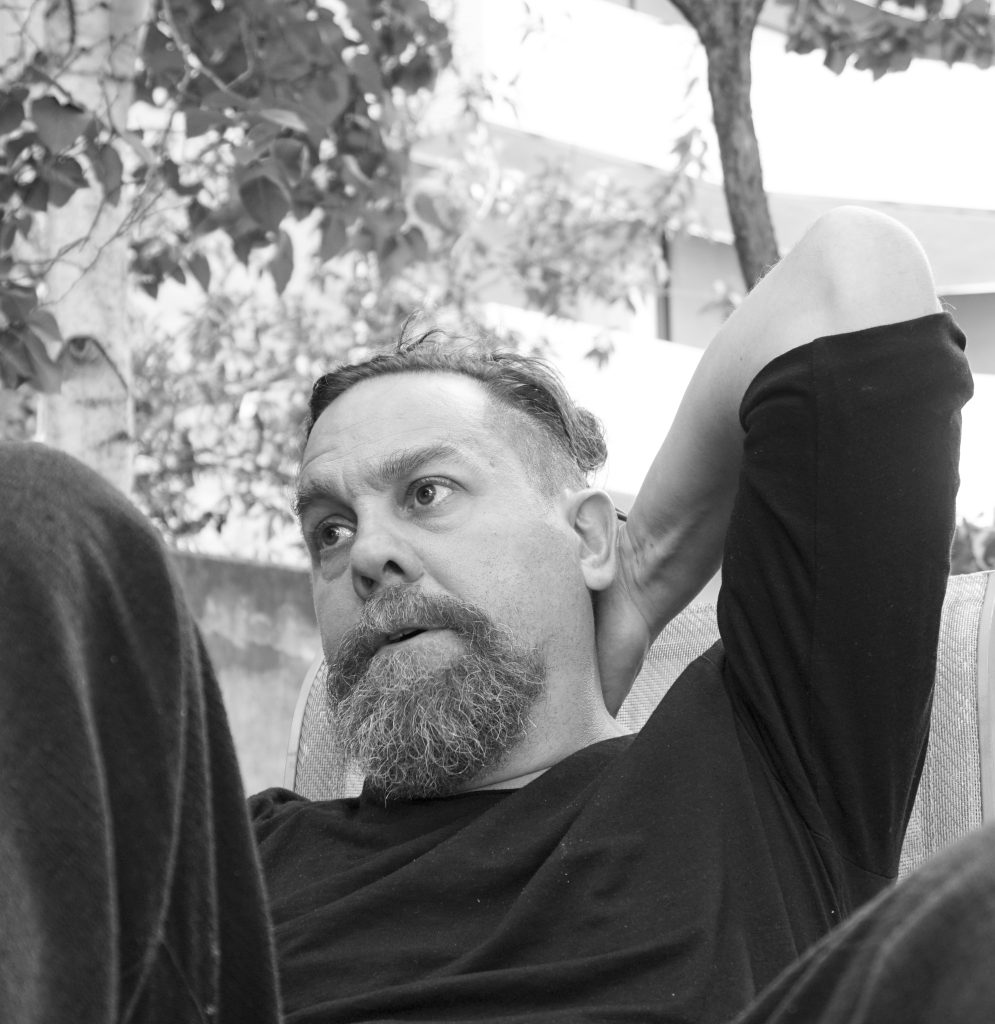Gustavo Mendez-Liska is a Venezuelan visual artist who has been based in Vienna since 1991. While humorously describing himself as “allergic to diplomas,” his artistic foundation includes studies at the Federico Brandt Art Institute in Caracas, Venezuela, as well as at the School of Arts and the Academy of Fine Arts in Vienna. In addition to his artistic practice, Gustavo expanded his skill set by completing a carpentry apprenticeship in Vienna in 2012.
Having lived in Vienna for over three decades, Gustavo maintains a deep connection to his Venezuelan and South American roots, which continue to influence his creative work and artistic perspective.
Gustavo
The diasporic background of the artist has undoubtedly a great impact on his searching for the geometrical forms, which come to him as a part of the universal language. At the same time, he is aware of their particularity concerning different cultural backgrounds and sensibilities. He focuses his attention on the gaps and niches, on the things, that remain unsaid, on the pause or breathing in in-between the composition. Such structural experiences are in general common for everyone.
text extract © Miroslava Urbanová 2018
Living since childhood with Geometrism in art, the artist explores geometric combinations in recycled wooden works, assemblages that recall the graphic structures of his masters from the Stijl movement, the embryo of Neoplasticism and the Bauhaus School. It is not by chance that in his series of monochrome drawings we see a work with direct references to Mondrian’s grid compositions, the constructivist matrix has always guided Gustavo’s work. The support has changed, but the body of the work has not disappeared. Monochrome drawings, in which the artist shows us total freedom with the line, with space. In these flat sculptural forms, their context, their palpable physicality and function operate as a permanent reminder of the body – which confirms in many ways the artist’s presence in its evident absence.
Text extract © Luiz Martins 2018


Heritage
When one writes and reflects about, Latin American geometric art, always comes to mind the heritage of artists like Jesus Soto, Torres Garcia, Hélio Oiticica, Cruz-Diez and many others. Concrete art, for us Latin American artists, is not only a reference of aesthetics inherited from the Russian constructivists, it is a reflection on life, on the senses and concepts such as inside and outside, emptiness and fullness.
In the works by the artist Gustavo Mendez-Liska is a great influence of his country’s art can be felt, even though he gained wings so long ago, like several artists of his generation. In these 30 years in Austria, Gustavo has been developing his ideas without losing sight of his origins. I have followed the development of his work since his wood reliefs, when he draws not with pencil and paper but with machine and wood – transmitting with great Strength the Western way of thinking, acting and transforming.
Living since childhood with Geometrism in art, the artist explores geometric combinations in recycled wooden works, assemblages that recall the graphic structures of his masters from the Stijl movement, the embryo of Neoplasticism and the Bauhaus School. It is not by chance that in this series of monochrome drawings we see a work with direct references to Mondrian’s grid compositions, the constructivist matrix has always guided Gustavo’s work. The support has changed, but the body of the work has not disappeared. Monochrome drawings, in which the artist shows us total freedom with the line, with space. In these flat sculptural forms, their context, their palpable physicality and function operate as a permanent reminder of the body – which confirms in many ways the artist’s presence in its evident absence.
Gustavo approaches his current understanding of the body of his work by dematerialising it, something rare to see in an artist who transits from the two-dimensional to the three-dimensional. Materiality, due to its interchange ability, becomes secondary, reinforcing the artist’s perception of society, or of this society – so different from his habitat and which, partly through stubbornness and partly through gratitude and persistence has become a reference. In this project Gustavo seeks the evident primacy of a heritage that appears here levelled with other elements, through compositional strategies, inversions and repetitions that suggest an interchangeable identity.
I would like to end by underlining the cultural and social contemporaneity present in this set of works by Gustavo Mendez-Liska. His works reflect his personal and collective condition, he question the different, the other, the limits of his relations with this society, rethinking at the same time the concept of limit, returning to the root of the word Heritage, as something concrete that influences, transforms and strengthens. From an immigrant’s point of view, heritage particularises and enriches, characterises the parties and enables a rich dialogue, open and in solidarity.
Text © Luiz Martins 2018

